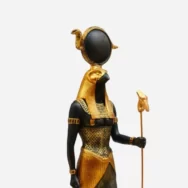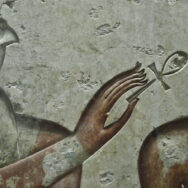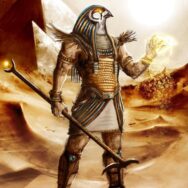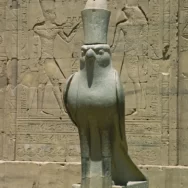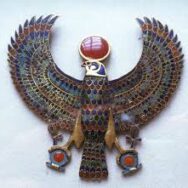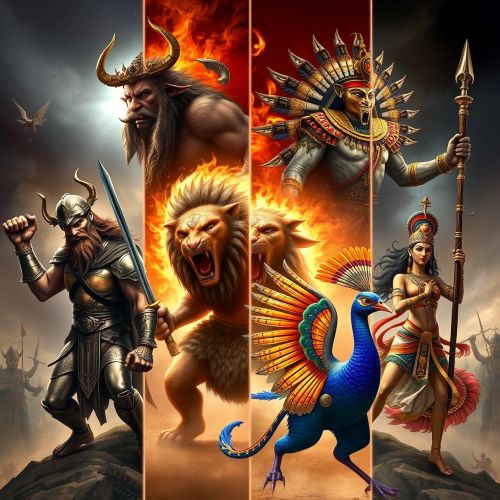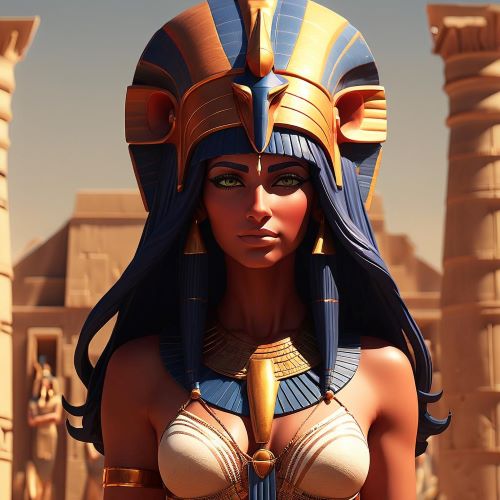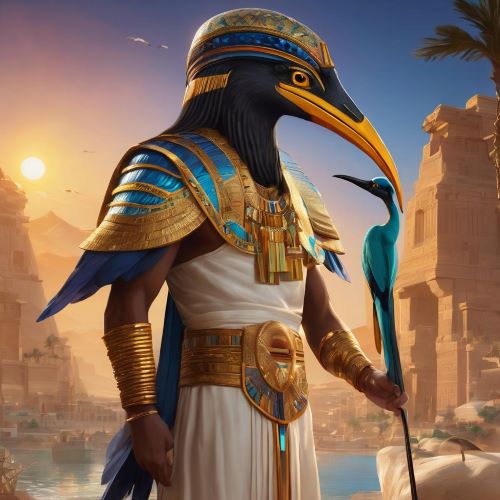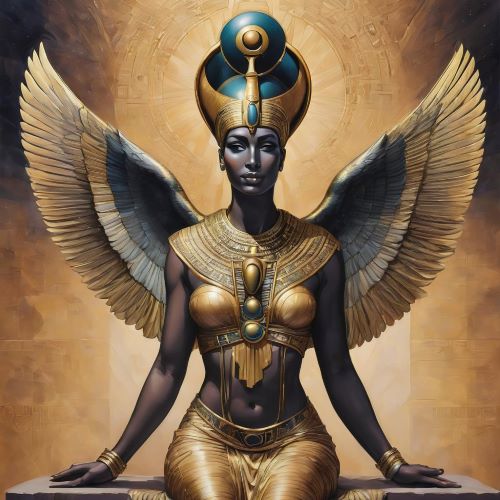Horus : The Sky God
Listen
Horus
Introduction
One of the most prominent deities of ancient Egypt is the god of the skies, Horus. He is often portrayed as either a man with a falcon’s head or a falcon with a double crown, which represents his rule over both Upper and Lower Egypt. The Eye of Horus is a powerful amulet that is connected to his protection and sight.
In ancient Egypt, the gods known as the Egyptian Hor, Har, Her, Heru, or Horus were created as falcon deities. They were represented by the right eye being the sun or morning star, and the left eye being the moon or evening star. During the time of the ancient Egyptian pharaohs, there were numerous falcon cults. The Egyptian god Horus is a complex and contradictory deity. According to the ancient Egyptians, he had many manifestations, and each of them represents a different aspect of his being. He was often depicted as a falcon, and he represented the principles of the kingship of Egypt.
Physical Traits
An ivory comb was used to portray the falcon god Horus, and also showed him as a bird riding on a boat with its wings spread out. He was depicted with the stars, the moon, and the sun in his eyes.
Family
As the religion grew, it became more apparent that Horus was the son of Isis and Osiris, and he was also the rival of Seth. This resulted in a myth about Seth and Horus, where he was envious of his brother, Osiris. He killed Osiris and split his body into pieces, scattering them throughout Egypt.
With the help of her sister Nephthys, Isis was able to obtain the pieces of her husband, Osiris. After bringing him back to life, Isis became the ruler of the sacred land and the underworld. She also gave birth to Horus, and hid him so that he could one day beat Seth.
When he was older, Horus fought against Seth. After defeating him, he became king. Unfortunately, during the battle, Seth split his eye into six pieces, which caused Thoth to restore his eye and create the Eye of Horus, which is also known as Wadjat. The pieces represent various senses and fractions.
Other names
The name of the god Horus is said to mean “one who is above” or “one who is distant”. His hieroglyph is only shown with one reference to a falcon, and various other names have been given to him, such as the Elder, the Younger, the Edfu, and the Horus in the Horizon, among others. Horus had many forms and manifestations that reflected his different roles and functions. Some of his most common forms include Heru-ur (Horus the Elder): The original form of Horus, who represented cosmic order and primordial kingship. Heru-pa-khered (Horus the Younger): The son of Osiris and Isis, who represented divine kingship and vengeance. Heru-Behdeti (Horus of Behdet): A form of Horus associated with solar power and victory. Her-em-akhet (Horus in the Horizon): A form of Horus associated with resurrection and rebirth.
Powers and Abilities
Horus was a god of great significance and influence in ancient Egyptian religion. He was the god of the sky, kingship, protection, healing, and the sun. He was the son of Osiris and Isis, and the enemy of Set. He was the first king and the ancestor of all pharaohs. He was also a concept, a principle, and a way of life that shaped the culture and values of ancient Egypt.
Modern Day Influence
Christians have been at odds with one another over the interpretation of the story of Jesus as being influenced by the Egyptian deity, Horus, who was the son of Isis and Osiris. This is typically asserted by critics who try to undermine the theological and historical validity of Christianity. Proponents of the idea that Jesus is Horus use a distorted and selective selection of ancient sources, and they do not have the necessary evidence or arguments to support their claims. This is a modern myth that is not supported by any scholarly consensus or proof.
In Assassin’s Creed, one of the Isu, which was an ancient civilization prior to humanity, is Horus. He is the grandfather of Isis and Osiris, and the father of the Younger. He is also featured as a boss in the DLC “The Curse of the Pharaohs.” In Neil Gaiman’s American Gods, the god Horus is mentioned as a deity who came to the US with the immigrants. He is shown as a man with a falcon’s head who can fly and manipulate weather. In Rick Riordan’s The Red Pyramid, one of the gods of Egypt who can be summoned by a magician is Horus. He is shown as a young man with a falcon’s head who can use a khopesh and a sword. He also helps Ra against Apophis.
Related Images
Frequently Asked Questions
What is Horus the god of?
Horus, the majestic falcon-god of ancient Egypt, soared through the sky as the embodiment of kingship, sun, and war. Protector of pharaohs and healer of mothers, his watchful eyes symbolized sight and restoration, while his epic battle against his uncle revealed his fierce warrior spirit. From vulnerable child to triumphant king, Horus’ tale unfolded as a metaphor for transformation and life’s eternal cycle.
Did Horus fall in love?
Though Egyptian myths lacked Cupid’s arrows, Horus and Hathor shared a fascinating bond. She mothered and supported him, then later became his wife, embodying a union not of passionate hearts, but of divine loyalty, cosmic balance, and restoration after hardship.
What does the Horus symbolize?
From celestial majesty to earthly guardianship, Horus’ symbolism soars. He embodies the sun’s brilliance, the pharaoh’s might, the healer’s touch, and the warrior’s spirit, his journey a testament to growth and cosmic balance, forever etched in the heart of ancient Egypt.
Was Horus born of a virgin?
While Isis’ magical feat of resurrecting Osiris enabled Horus’ birth, it wasn’t a virgin conception in the modern sense. Egyptian mythology, steeped in divine magic and physical interactions, offers a unique perspective on creation, death, and rebirth, one where Horus’ origin unfolds as a captivating tale of resilience and divine ingenuity.
Who was the wife of Horus?
While Horus often dances with Hathor, both mother and wife in a cosmic ballet of balance and loyalty, whispers of other wives, fiery scorpion goddesses guarding his path, emerge from the shadows of lesser-known myths. Ultimately, whether he reigns solo or shares his sky with a consort depends on the story, each painting a different facet of the falcon god’s multifaceted legend.



